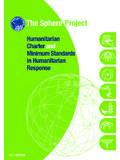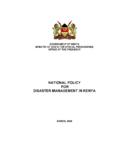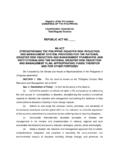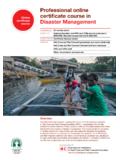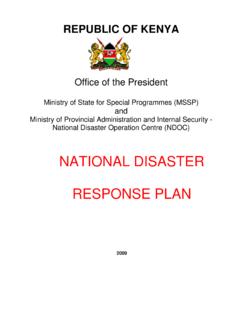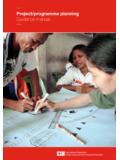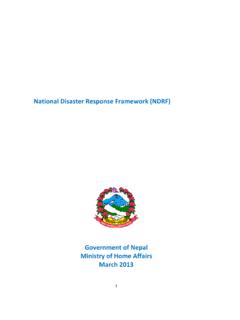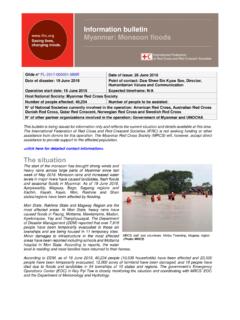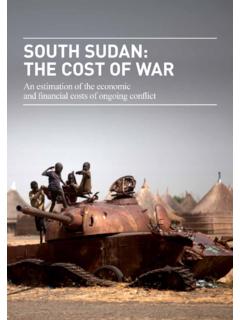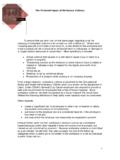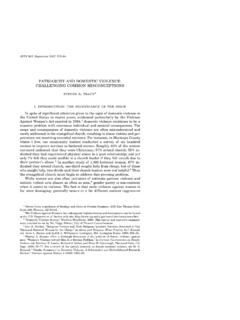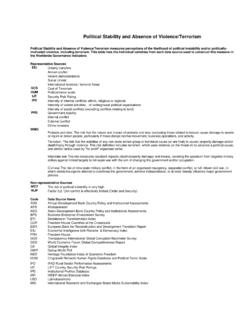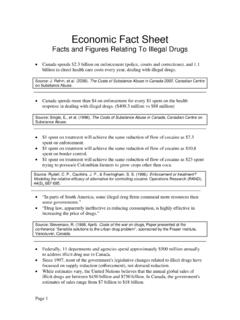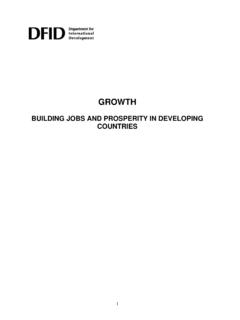Transcription of The Red Cross Red Crescent approach to …
1 Lives, changing Red Cross Red Crescent approach toPromoting a culture of non- violence and peaceTable of contentsIntroduction 3 The Challenge: violence , discrimination and exclusion 6 Transformation towards a CNV+P: Common roots, common solutions 7 Snapshot: Values and skills-based education, an essential tool for CNV+P 8 How do these values and skills relate to Red Cross Red Crescent ? 9 Snapshot: Promotion of a CNV+P in action: Youth as Agents of Behavioural 11 Transformation towards a CNV+P 12 Component 1: Non-discrimination and respect for diversity 12 Component 2: violence prevention, mitigation and response 14 Snapshot: Volunteering, an essential tool for CNV+P 16 Component 3: Social inclusion: inter-cultural, inter-religious and inter-generational dialogue 18 Conclusion: Promoting a CNV+P at multiple levels 2010 key ideas of the paper 21 Annex.
2 Examples of Red Cross Red Crescent and government programmes and policies contributing to the promotion of a CNV+P 22 International Federation of Red Cross and Red Crescent Societies, Geneva, of all or part of this study may be made for noncommercial use, providing the source is acknowledged. The IFRC would appreciate receiving details of its use. Requests for commercial reproduction should be directed to the IFRC at opinions and recommendations expressed in this study do not necessarily represent the official policy of the IFRC or of individual National Red Cross or Red Crescent Societies.
3 The designations and maps used do not imply the expression of any opinion on the part of the International Federation or National Societies concerning the legal status of a territory or of its authorities. All photos used in this study are copyright of the IFRC unless otherwise indicated. Box 372 CH-1211 Geneva 19 Switzerland Telephone: +41 22 730 4222 Telefax: +41 22 733 0395 E-mail: Web site: photo: Marko Federation of Red Cross and Red Crescent SocietiesThe Red Cross Red Crescent approach to Promoting a culture of non- violence and peaceInternational Federation of Red Cross and Red Crescent SocietiesThe Red Cross Red Crescent approach to Promoting a culture of non- violence and peacePromoting a culture of non- violence and peaceViolence, discrimination and exclusion cause suffering for millions of people across the world today.
4 Born out of fear, ignorance and mistrust, these fac-tors undermine safety, health and human potential. Differences of opinion and disagreements are a normal part of humanity, but the question is: how can we deal with these in a constructive way? violence , discrimination and exclu-sion are too often looked at in isolation, as separate issues. However, they are intertwined and have common root causes. By looking at these common root causes, we can seek common promotion of a culture of non- violence and peace (CNV+P) is not just about the absence of war. It is not an end or final goal, but a process. It is about creat-ing an enabling environment for dialogue and discussion and finding solutions to problems and tensions, without fear of violence , through a process in which Introduction4 International Federation of Red Cross and Red Crescent SocietiesThe Red Cross Red Crescent approach to Promoting a culture of non- violence and peaceInternational Federation of Red Cross and Red Crescent SocietiesThe Red Cross Red Crescent approach to Promoting a culture of non- violence and peaceeveryone is valued and able to participate.
5 Going even further, the promotion of a CNV+P is about prevention and minimization, as much as possible, of the sources of tensions. A CNV+P is not a Utopian ideal. There are concrete actions we can take to work towards a more non-violent, humane and equal society. We have seen non- violence work as a foundation of a number of social and religious move-ments. It can also be used by individuals to reach out to others to find common solutions to problems. In this regard, developing non-violent communication is key, as an interpersonal skill for living peacefully together within families, in schools, communities, organisations and within our global village.
6 The promotion of a CNV+P is an intrinsic ideal of the International Federation of Red Cross and Red Crescent Societies (IFRC), comprised of 186 member Red Cross and Red Crescent national societies, the promotion of social inclusion and a culture of non- violence and peace is one of the three strategic aims in the IFRC s Strategy 2020.* The promotion of a CNV+P is an essential part of IFRC s activities, as it not only reduces violence and discrimi-nation but also creates stronger, healthier and more resilient communities. Red Cross and Red Crescent national societies are well placed to have significant impact at the community level and in working with their governments to cre-ate enabling environments that can contribute to the promotion of a CNV+ IFRC has defined a culture of non- violence in its Strategy on violence preven-tion, mitigation and response**: a culture of non- violence respects human beings, their well-being and dignity; it honours diversity, non-discrimination, inclusiveness, mutual understanding and dialogue, willingness to serve, cooperation and lasting peace.
7 It is a culture where individuals, institutions and societies refrain from harming others, groups, communities or themselves. There is a commitment to positive and constructive solutions to problems, tensions and the source of violence ; violence is never an option. * Strategy 2020, Strategic aim 3: Promote social inclusion and a culture of nonviolence and peace (Adopted by the IFRC s General Assembly in November 2009). Available at: ** Strategy on violence prevention, mitigation and response. Available at: and figures Each day, 4,200 people die from violence ( million a year), more than 90 per cent of them in low and middle-income countries; approximately 2,300 die from suicide, 1,500 from interpersonal violence and 400 from collective violence .
8 Butchart, A., Brown, D., Wilson, A. and Mikton, C. (2008). Preventing violence and reducing its impact: How development agencies can help. World Health Organization. violence is among the leading causes of death for people aged 15 to 44 years worldwide, accounting for about 14 per cent of deaths among males and 7 per cent of deaths among females. Beyond the trauma and suffering of victims, violence involves staggering economic costs nationwide. In fact, these costs are estimated at about 8 per cent of gross domestic product (GDP) by including the security of citizens, and judicial and health system spending.
9 Crimen y violencia en Centroam rica. Un desaf o para el desarrollo. World Bank (2011). violence within communities has shown to increase 50 per cent of security costs spent by local businesses, and decrease motivation to expand business ventures by 39 per cent. Butchart et al. Sexual abuse experienced during childhood accounts for 27 per cent of post-traumatic stress disorders, 10 per cent of panic disorders, 8 per cent of suicide attempts and 6 per cent of cases of depression and substance abuse in the general population. Butchart et al. Children who live with domestic violence are at increased risk of behavioural problems and emotional trauma, and mental health difficulties in adult life.
10 Kolbo et al., 1996; Morley and Mullender, 1994; Hester et al., 2000, 2007, in Girls are 70 per cent of the 130 million children who are out of school Seventy per cent of the world s billion poor living on one US dollar or less per day are women. It is estimated that one in five women will become a victim of rape or attempted rape in her lifetime. Nearly 50 per cent of all sexual assaults worldwide are against girls 15 years of age or younger. or #sexual Some 750 million people face socio-economic discrimination or disadvantage because of their cultural identities. From UNFPA report: Negotiating Culture: Reproductive Health and Reproductive Rights (2008).
